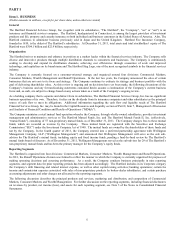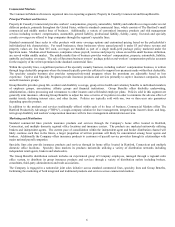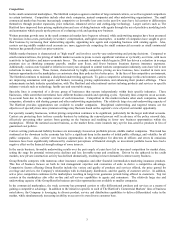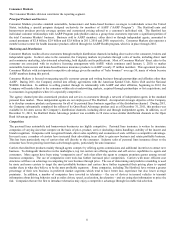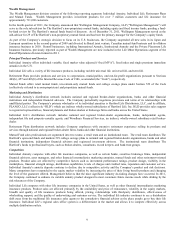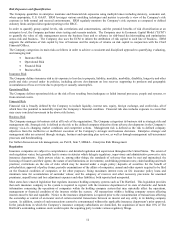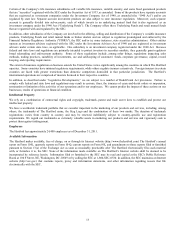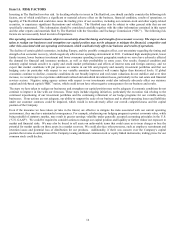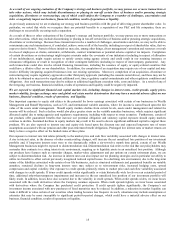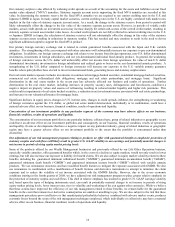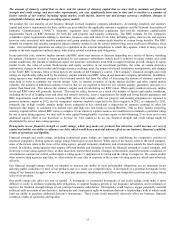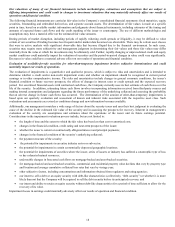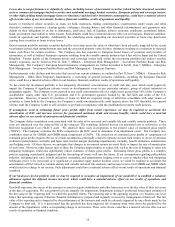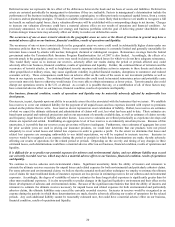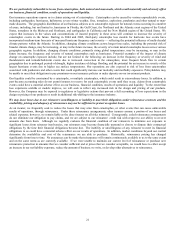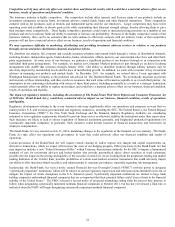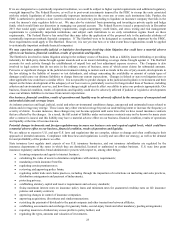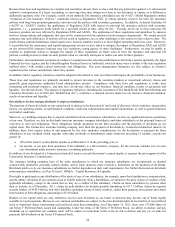The Hartford 2011 Annual Report Download - page 14
Download and view the complete annual report
Please find page 14 of the 2011 The Hartford annual report below. You can navigate through the pages in the report by either clicking on the pages listed below, or by using the keyword search tool below to find specific information within the annual report.14
Item 1A. RISK FACTORS
Investing in The Hartford involves risk. In deciding whether to invest in The Hartford, you should carefully consider the following risk
factors, any of which could have a significant or material adverse effect on the business, financial condition, results of operations, or
liquidity of The Hartford and could also cause the trading price of our securities, including our common stock and other equity-related
securities, to experience significant fluctuations and volatility. The Hartford may also be subject to other general risks that are not
specifically enumerated. This information should be considered carefully together with the other information contained in this report
and the other reports and materials filed by The Hartford with the Securities and Exchange Commission (“SEC”). The following risk
factors are not necessarily listed in order of importance.
Our operating environment remains subject to uncertainty about the timing and strength of an economic recovery. The steps we have
taken to realign our businesses and strengthen our capital position may not be adequate to mitigate the financial, competitive and
other risks associated with our operating environment, which could adversely affect our business and results of operations.
The decline of certain global economies, including Europe, and the possible contagion effect, cast uncertainty regarding the timing and
strength of an economic recovery, which negatively affected our operating environment in 2011. Continued high unemployment, lower
family income, lower business investment and lower consumer spending in most geographic markets we serve have adversely affected
the demand for financial and insurance products, as well as their profitability in some cases. Our results, financial condition and
statutory capital remain sensitive to equity and credit market performance and effects of interest rates and foreign currency, and we
expect that market conditions will put pressure on returns in our life and property and casualty investment portfolios and that our
hedging costs (in particular with respect to our variable annuities businesses) will remain higher than historical levels. If global
economies continue to decline, economic conditions do not broadly improve and real estate valuations do not stabilize and over time
increase, we would expect to experience additional realized and unrealized investment losses, particularly in the real estate and financial
services sectors. Negative rating agency actions with respect to our investments could also indirectly adversely affect our statutory
capital and risk-based capital (“RBC”) ratios, which could in turn have other negative consequences for our business and results.
The steps we have taken to realign our businesses and strengthen our capital position may not be adequate if economic conditions do not
continue to improve in line with our forecasts. These steps include ongoing initiatives, particularly the execution risk relating to the
continued repositioning of our investment portfolios and the continuing refinement of our hedge programs for our variable annuity
businesses. If our actions are not adequate, our ability to support the scale of our business and to absorb operating losses and liabilities
under our customer contracts could be impaired, which would in turn adversely affect our overall competitiveness and the capital
position of the Company.
Even if the measures we have taken (or take in the future) are effective to mitigate the risks associated with our current operating
environment, they may have unintended consequences. For example, rebalancing our hedging program to protect economic value, while
being mindful of statutory surplus, may result in greater earnings volatility under generally accepted accounting principles in the U.S.
(“U.S. GAAP”). We could be required to consider actions to manage our capital position and liquidity or further reduce our exposure to
market and financial risks. We may also be forced to sell assets on unfavorable terms that could cause us to incur charges or lose the
potential for market upside on those assets in a market recovery. We could also face other pressures, such as employee recruitment and
retention issues and potential loss of distribution for our products. Additionally, if there was concern over the Company’ s capital
position that creates an anticipation of the Company issuing additional common stock or equity linked instruments, trading prices for our
common stock could decline.



